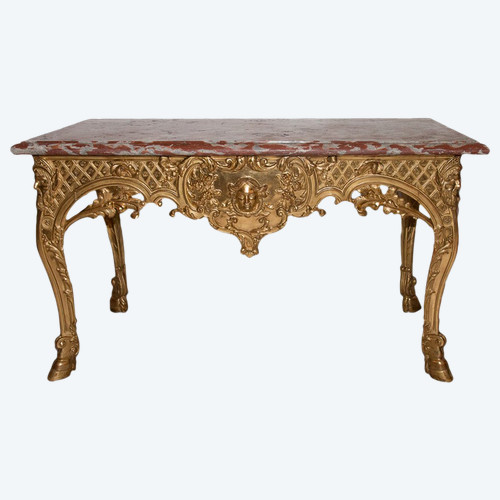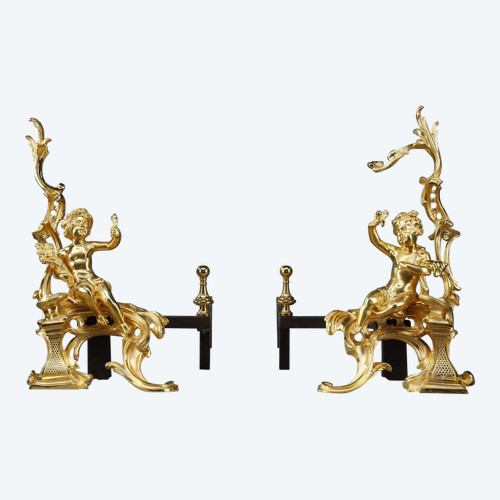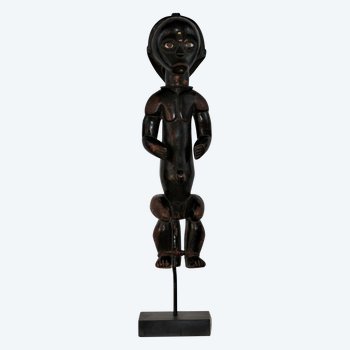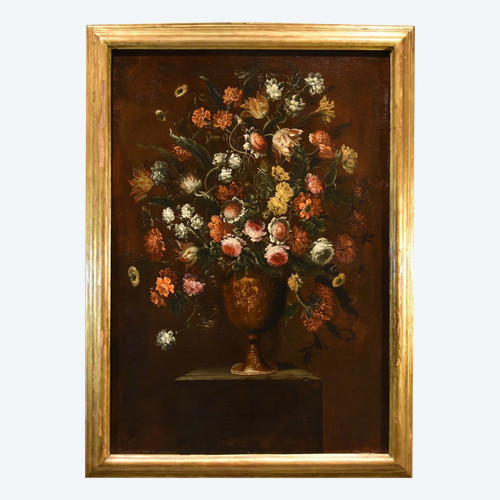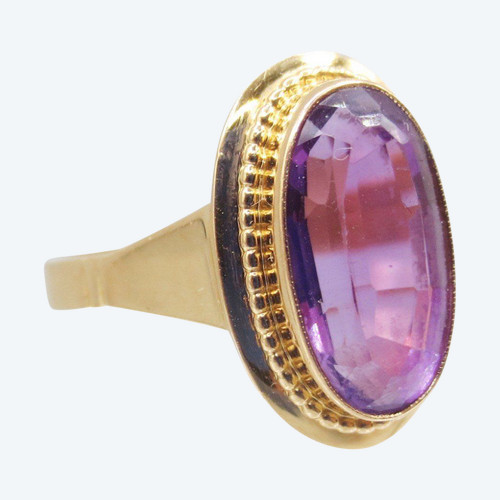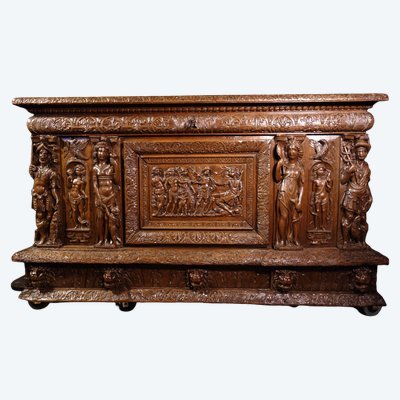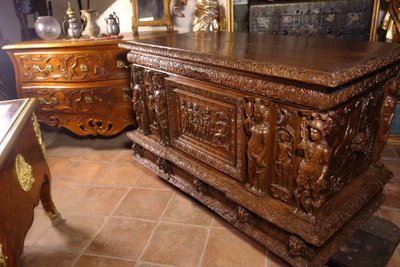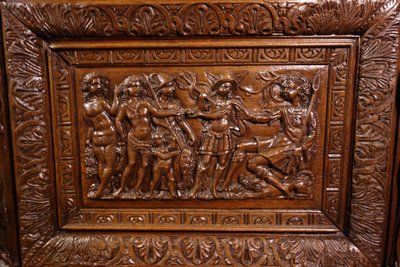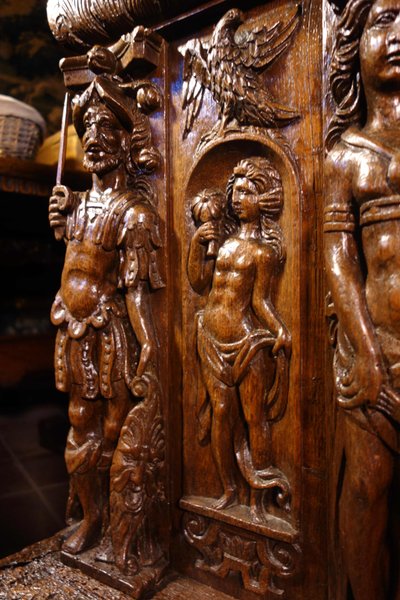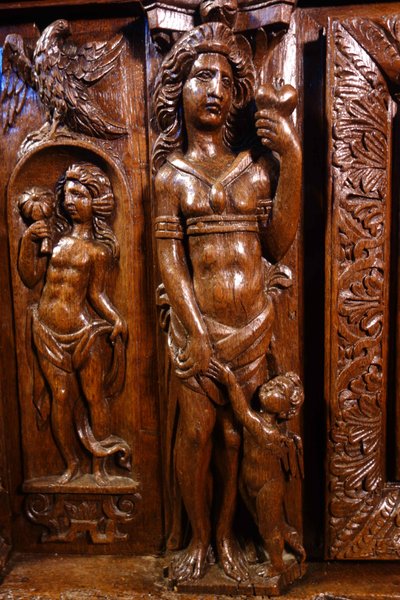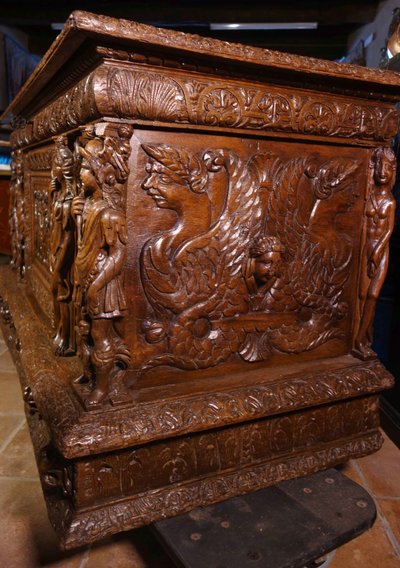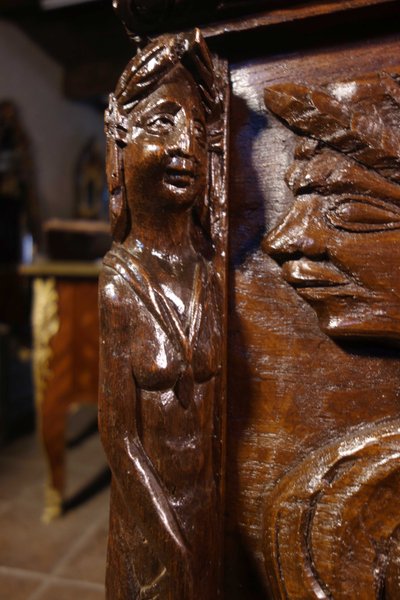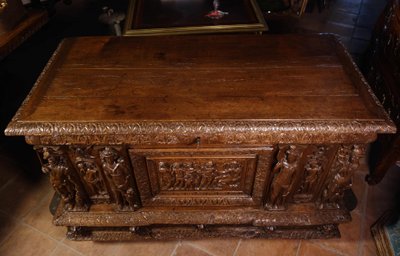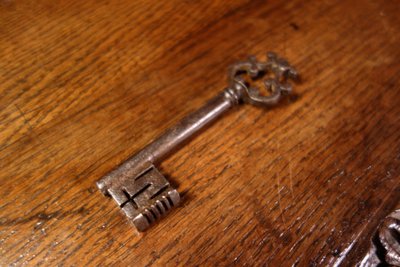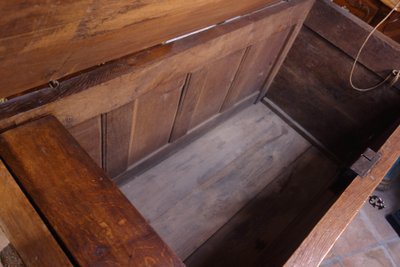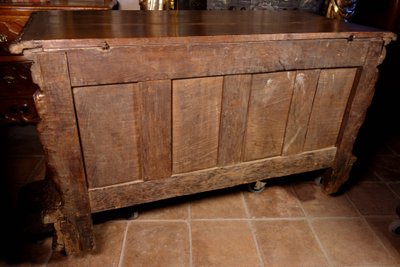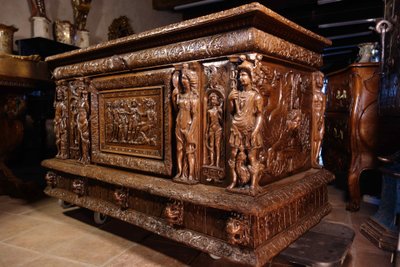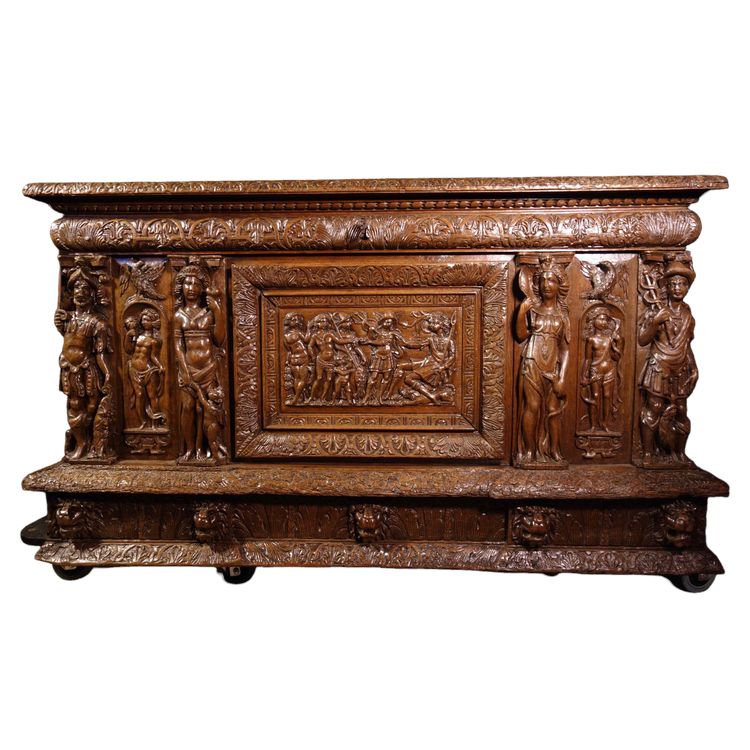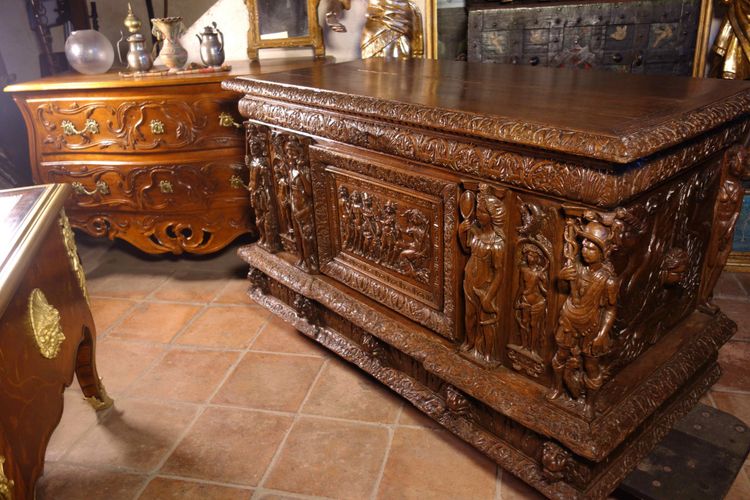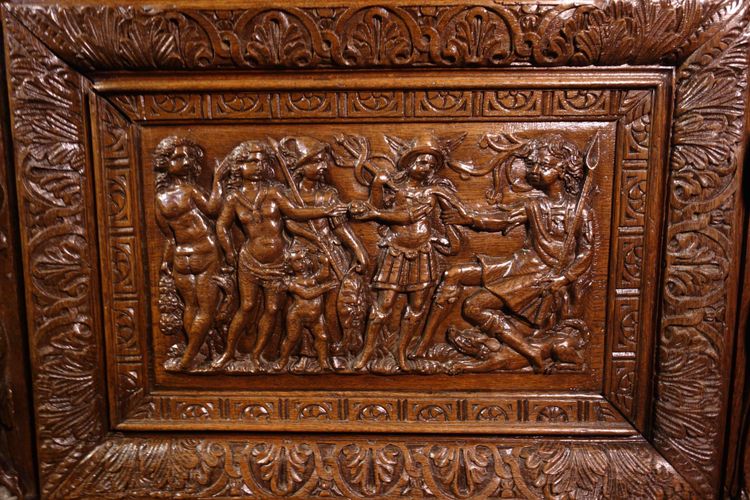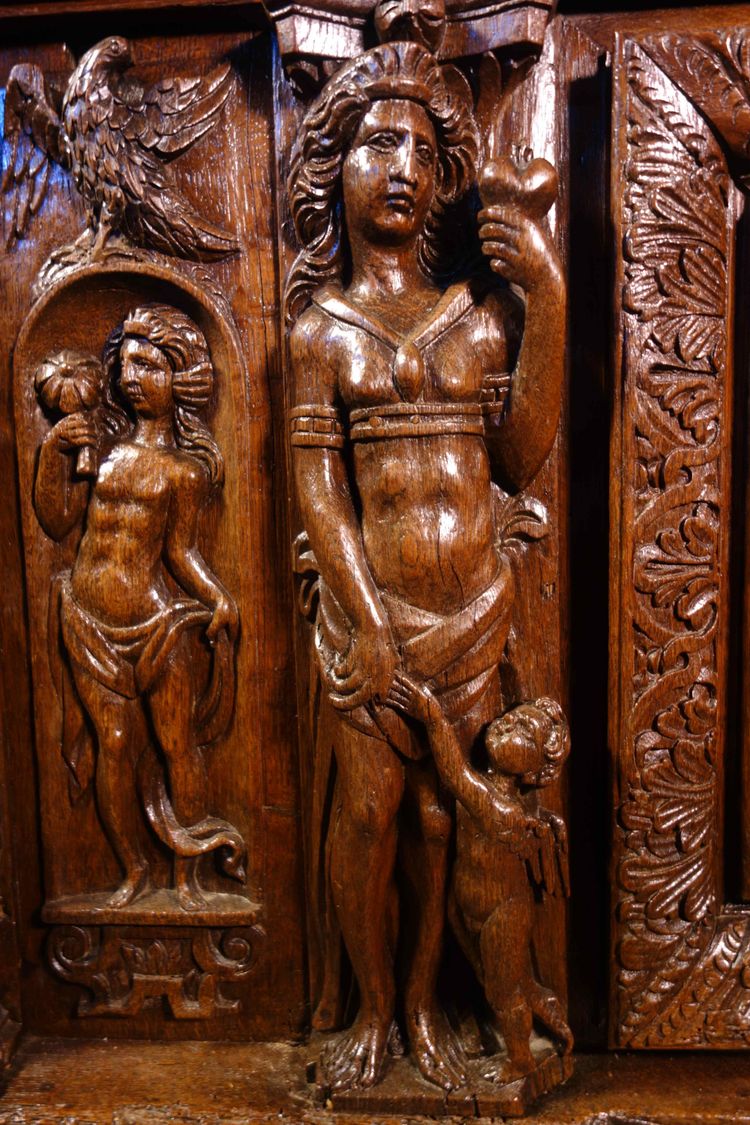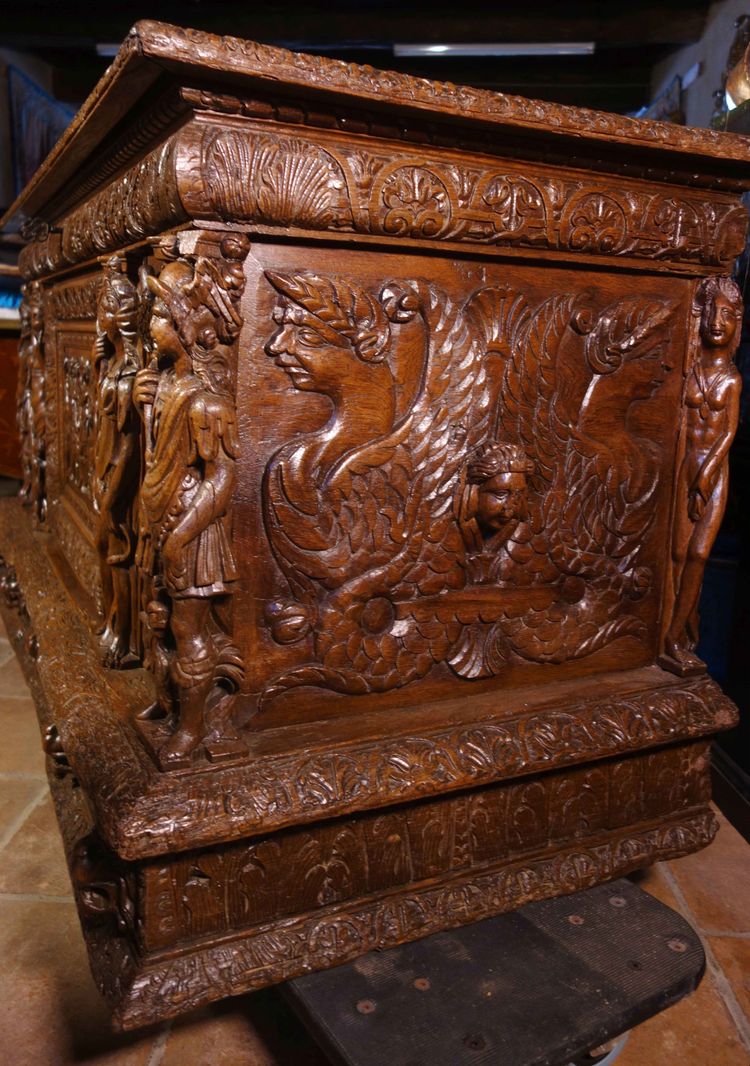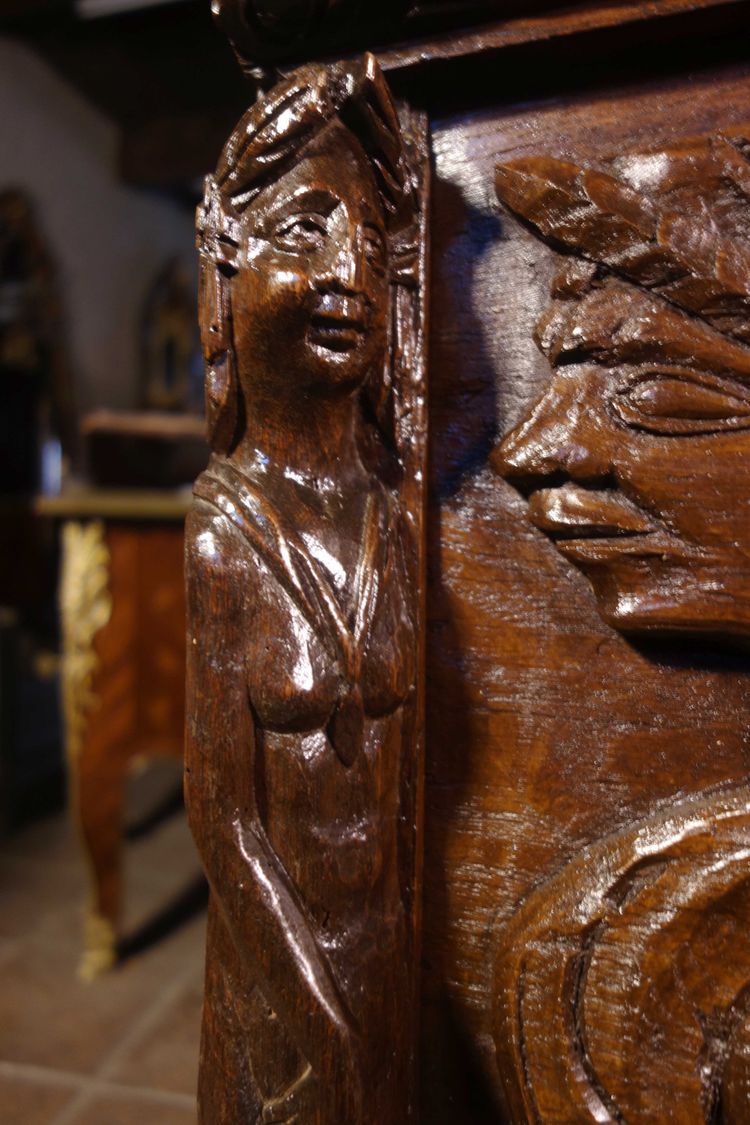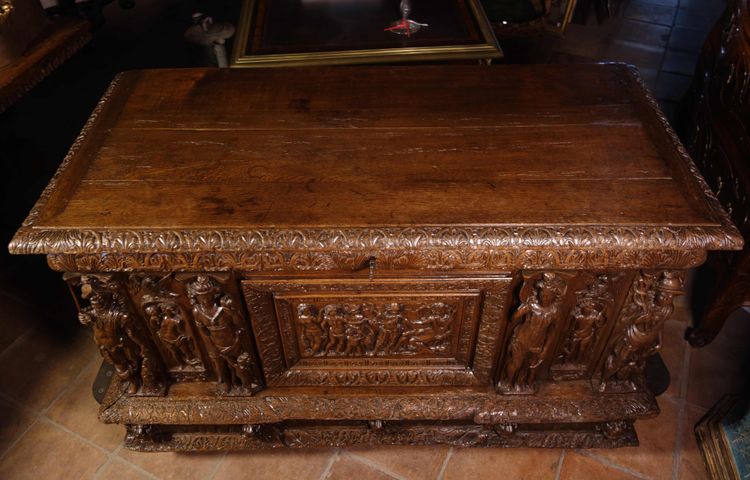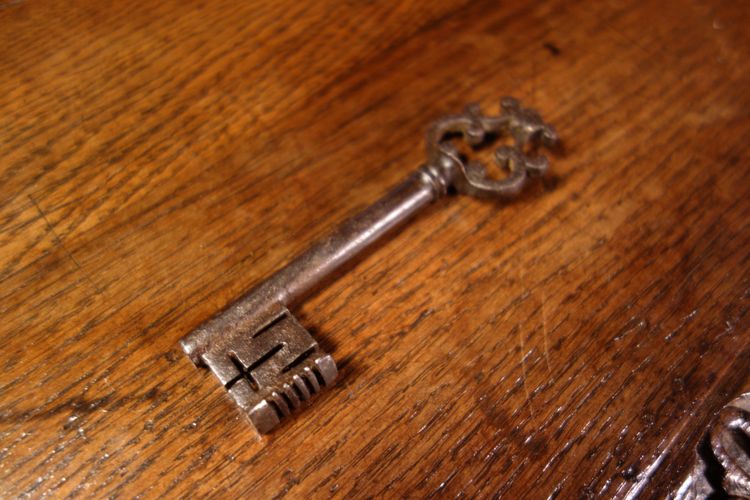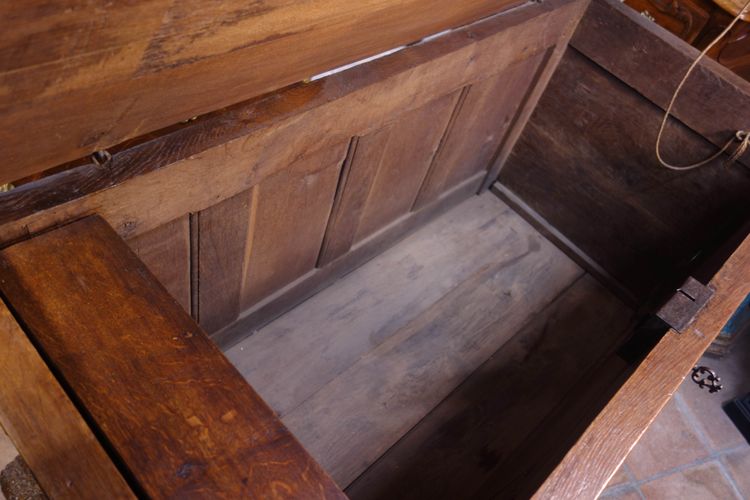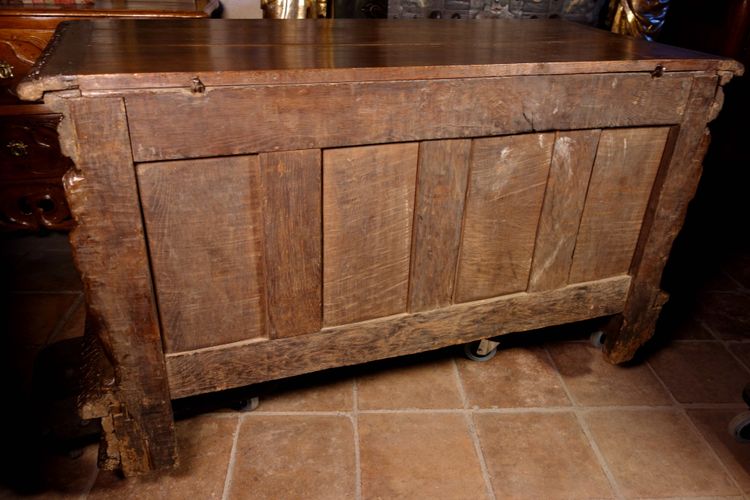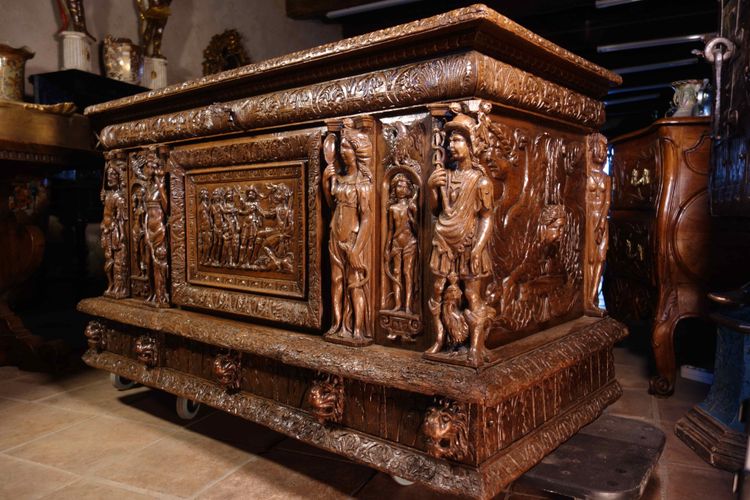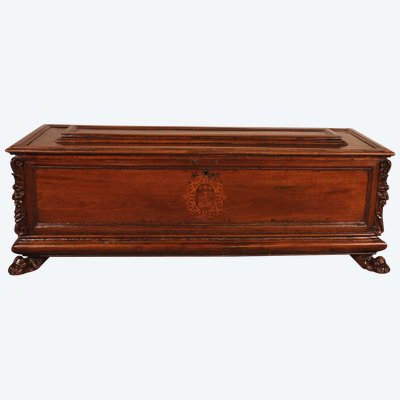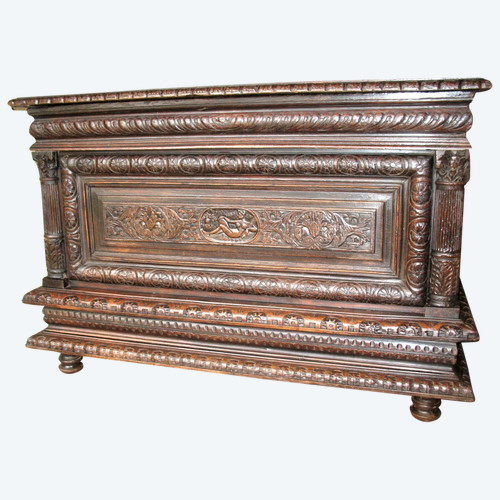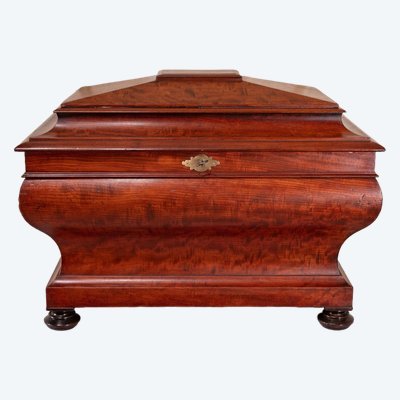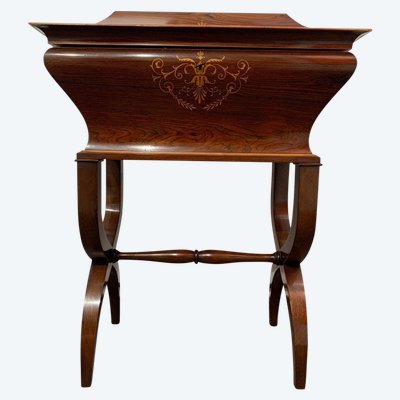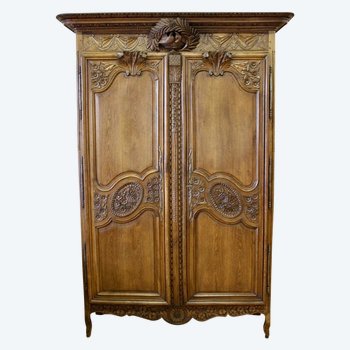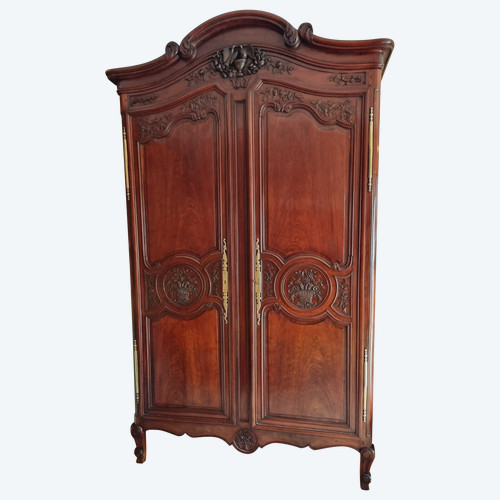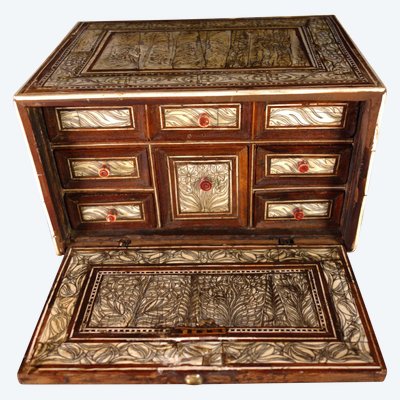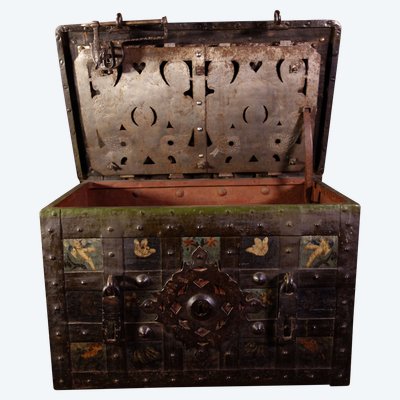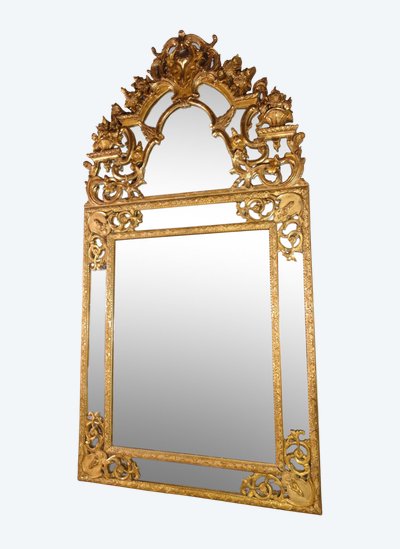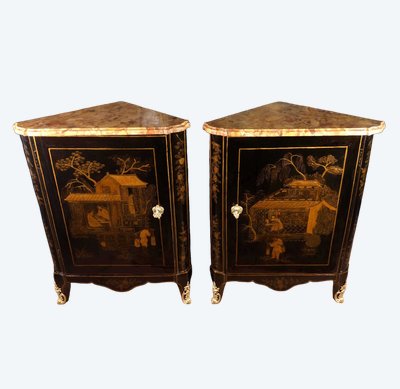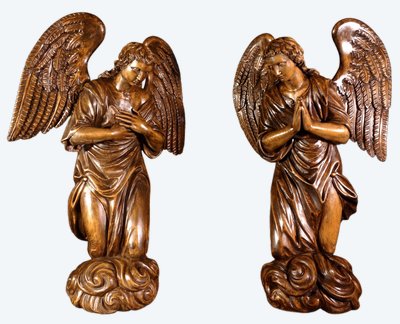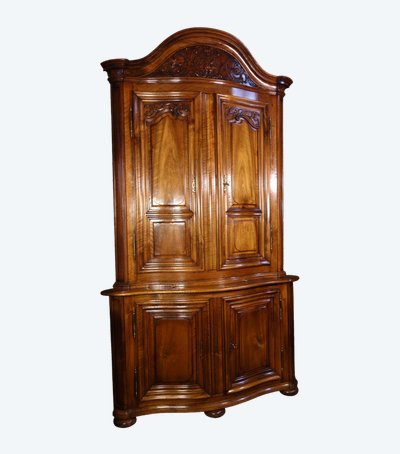This description has been translated and may not be completely accurate. Click here to see the original
An important solid oak castral wedding chest from the late 16th century. Its large dimensions, 147 cm long and 86 cm high, make it more substantial than a chest of drawers.
The ornamentation is composed of Christian allegories and mythological scenes, in keeping with the spirit of the period's interest in the study of antiquity. Our chest and its majestic layout are similar to the chest in the Musée des Arts Décoratifs in Paris, whose facade depicts the death of Adonis, and also to the chest in the Musée National de la Renaissance in Écouen, with its sides featuring faces emerging in relief. This piece was the result of a prestigious commission for a noble family, which, according to the custom of the time, had been executed before a notary. The chest contained several drawings, and a final model was signed by the parties and initialed ne varietur by the notary.
The central cartouche panel depicts the mythological episode of the Judgment of Paris. The Trojan prince was chosen to judge which of three goddesses—Aphrodite, Athena, and Hera—was the most beautiful. Each goddess attempted to seduce Paris with gifts. Aphrodite promised him the love of the most beautiful woman in the world, Helen, who was already married to King Menelaus of Sparta. Athena offered him wisdom and victory in war, while Hera promised him dominion over all kingdoms. Ultimately, Paris chose Aphrodite as the most beautiful of the goddesses, in exchange for Helen's love. This angered Hera and Athena, who supported the Greeks in the ensuing war, known as the Trojan War. This bas-relief depiction highlights the characters' attributes, including Athena's spear and shield, also called the Aegis, adorned with the mask of Medusa. Cupid is also depicted, along with a dog accompanying the Trojan prince, reminiscent of Sandro Botticelli's painting of the Judgement of Paris.
On the façade, four large figures in high relief stand out, as well as two smaller figures in bas-relief depicted in niches surmounted by birds.
From left to right: the first figure in armor is Perseus, the hero of Greek mythology who ended the life of Medusa. The grimacing face on the shield is the Gorgóneion, the mask of the Gorgon, later given to Athena.
The female figure holding a flower is the nymph Chloris, very popular during the Renaissance. She brings fertility.
The third figure is one of the three allegories of the theological virtues: Charity. She is depicted with a winged cherub, holding the sacred heart of Jesus.
The fourth figure is the allegory of Prudence, one of the four cardinal virtues. She is depicted holding her classical attribute, the mirror, to watch for danger.
The fifth figure is a rare and original representation. This goddess, holding a serpent in each hand, comes from a Bronze Age Cretan cult; she is associated with femininity and the home.
The last figure is Hermes, god of messengers, travelers, merchants, and orators. His attributes are also found: the caduceus and the winged helmet.
The sides of this impressive piece are sculpted with large winged sphinxes watching over each side. In the center, a face emerges from the composition, similar to the chest in the Musée National de la Renaissance in Écouen. The rear uprights are sculpted with female figures, present to frame these superb monsters.
Resting on a generous double-molded, projecting plinth entirely carved with friezes and palm leaves, five finely carved lion muzzles stand out and stare at the viewer. The top of the chest is also richly decorated with motifs, including acanthus leaves on its double molding.
A small interior drop-leaf box is provided for more precious objects.
The original key is highly representative of the virtuosity of the Second Renaissance craftsmen. The aesthetic is carefully thought out from the ring to the bit, with its openwork cross and very fine "comb" allowing for opening.
The Second Renaissance chest was an essential piece of furniture, particularly among noble lineages. Chests featuring figures were among the most luxurious models. The motifs of the richly carved ornamentation of our chest were originally borrowed from the Italian Renaissance following the French campaigns of Charles VIII (Le Mobilier du Moyen Age et de la Renaissance en France by Jacques Thirion). This chest, with its symbols and allegories centered on passion, including Paris's love for Helen, and the representation of fertility, the home, and Prudence, was likely intended as a wedding gift for a union of two aristocratic families, bringing peace to the home and fertility to the couple.
Late 16th century. Maintenance restorations, notably on the sword of Perseus and on the back of the top.
Length: 147 cm
Ref: L7MWYGT4OO
 Ring, Gold And Amethyst.
680 € EUR
Ring, Gold And Amethyst.
680 € EUR

